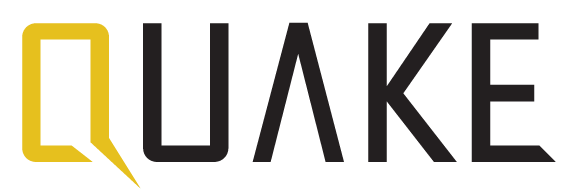This blog post is a transcription of Quake’s First Virtual VC Panel. Our panel included some of the most seasoned investors in our ecosystem that shed light on topics such as:
Requirements of a Series A raise
The typical benchmarks needed for a successful fundraise
How to properly pitch a Series A investment
How the funds respectively look at the COVID-19 Pandemic, and its impact on fundraising
A huge shoutout to our wonderful panel and the knowledge they equip our founders with:
Laura Chau – Principal at Canaan Partners
Eric Franchi – Partner at Math Capital
Vinay Iyengar – Investor at Bessemer Venture Partners

Eric: We typically invest in Pre Seed and Seed with a founder and a powerpoint, to a company in the market generating initial revenue. We endeavor to have anywhere from 50k to 500k invested in a company, in regards to follow on for companies that will do so one or two times within a funding cycle.
Vinay: For Bessemer, we put more capital to work given our recent fund size of $2.5 billion. More capital is required to put to work to move the needle forward. Typical check sizes for Series A and B are $5 – $20m, and we participate in quite a few growth rounds as well.
Laura: For Seed we do $1.5 – $4m in checks, for Series A we do $5-$10m, and for Series B we do $10-$15m. Q: What does an average Series A investment look like for your fund, and what are some metrics you look at with the fund raise?
Eric: We mostly focus on Pre-Seed and Seed. Typically when we’re in a Series A, we’re following up with a previous seed investment. It seems in Mar-tech and Ad-tech, the magic number is a $1M ARR to peak our interest.
Laura: With everything that’s going on broadly, what we really look for is momentum, specifically analyzing audience based models. If you can show consistent month over month growth and really hit an inflection point, that will usually be enough to catalyze a fierce conversation. Similarly, for revenue, depending on the business model, it might be that you’ve consistently grown and you figured out a specific lever within the business and now are able to really fuel that with additional capital. In terms of burn, there’s a lot of software companies that we invest in that have relatively low burn, leading up to their A, because they’ve really just been in execution and R&D mode. On the founding team, I think it’s the same in terms of what we’d be looking for at the seed, which is really great at setting a vision not only for the storytelling they’re doing with VCs, but setting a vision for their employees to get them bought into joining an early stage company. We also look for founders who are really buttoned up on their business and know the numbers.
Vinay: Digging in a bit deeper on the B2B side, ultimately what we’re looking for at Series A are signs of product market fit. There’s no magic metrics that indicate product market fit. I think about it in two categories. One is you are building a product in a well known category against a bunch of other players. If you’re building that type of business, we want to see a little more traction, somewhere around $1 million ARR. We also want to see efficient growth, specifically in customer acquisition. You can display that there’s a repeatable go-to-market engine that we’re investing in where you can grow the business from one to 10 to 100 million in ARR ultimately. The second category is you’re pioneering something really new, you’re building in a new category, you’re building some tech that’s really novel and innovative. And for that you don’t really need to be $1m in ARR, you can be at a few hundred in ARR, and you have a few referring customers who love the product. Q: Laura, you bring up a good point about Consistency and Momentum. When you’re looking at month over month growth what do you see appealing momentum?
Laura: It honestly really depends on the company and what you’re tracking. User growth for a social app in the early days should be massive, right? But user growth on a grocery delivery platform that has a much higher take rate and in terms of your margin, maybe it doesn’t have to grow that much. I will also say there may be some unique metric for your business that doesn’t fit the mold for typical b2b business or typical social business. If you can explain what that metric is, why it’s important and why that’s the specific KPI that matters for your business, it could go a long way.
Vinay: I think, to your question about user growth, above all else at the early stages, seeing a positive resting growth rate is often a compelling thing. That means, without putting a lot of money into sales and marketing, are you growing? It’s so important to be able to grow in a capital efficient way. I think increasingly that’s going to be a metric that VCs pay closer attention to. Q: How is the pitch different from seed to Series A?
Vinay: I think the biggest difference is, in Series A, hopefully there’s more data to point to in order for us to be a little more data driven in our decision. Whereas at the Seed, we’re trying to bind to a vision, we’re trying to understand the team. Do they have domain expertise in the problem that they’re trying to solve and the product that they’re building? I think at the Series A, you start to see a little more uniformity around what a business looks like.
Eric: Oftentimes at the seed stage, we’re weighting on a team, generally, above all. We know that over extended periods of time, things undoubtedly change when you’re building a business. It’s as much as possible about the team, as well as the market that they are attacking and their vision for it. Then as you go, and you have more traction as a business, you have the benefit of telling a story about how you know the problem. The customers that you know are finding your business.
Laura: The only thing I’ll add is that I think about the seed as really being the time where a team or company is experimenting and testing. Once you start to see the inflection point from one of them, that’s when you’re ready to raise a Series A. I want to have the comfort that the team that I’m backing has done all of the work and gone out to market to understand what’s needed, or they figured out what really works, whether it’s with their go to market or with a specific product feature. They can demonstrate we did this work over the last 12-24 months with the seed capital. It makes me also feel confident in that team’s ability to not only execute but the fact that they’ve been very comprehensive in their approach. Q: What is something that’s usually overlooked from a founder when they’re pitching sharing their deck? Something you see frequently.
Eric: I’m sort of biased towards the early stage where founders have had a lot of learnings, secrets and domain experience that’s kept inside at that point. You can almost treat the pitch as an educational session. But oftentimes I might come in with a bias towards a market or product, and a good portion of the presentation is walking me through a very fact based way on why this is a great space. I think it goes a long way towards getting the potential investor on your side and making them feel like they’re walking away with some value themselves.
Vinay: Focus on teaching us something we don’t know and showing us why you’re uniquely qualified to be building this business. I think above all else, you need to remember that you’re telling a story. One thing that a lot of founders do is they assume we know more than we actually do. It’s okay to rehash things that you think we know about a market or a space. But by all means, assume that our sort of knowledge level about the market and the product and the spaces is very low.
Laura: The other thing I would add is that a lot of founders that I see often discount the competition, but I actually respond best to the companies that really break down the competition and say, here’s what some of the other companies are doing. This is what I’m doing and why it’s better specifically. Q: How long do you feel startups will have the wave of impact from Covid 19 based on what your fund thinks?
Laura: I would assume that it’s going to be months, not weeks. In terms of returning to investing, I think there are plenty of funds, Canaan included, which are still continuing to invest during this time. But I would say that expectations on valuation should probably be different now then they were a month ago. The good thing is that most venture funds already have capital that has been committed from LPs, which means they still need to deploy that capital and will be looking to invest in startups. I think what changes is perhaps the pace at which that happens, and the terms of valuation that maybe we’re seeing a month or two months ago.
Vinay: Most venture capital firms will continue to be open for business and continue to want to invest in early stage companies. And in fact, many will see this as a time of really great opportunity to invest in companies and good prices. I would say valuation expectations should be lower. It also is very dependent on what you’re building – if you’re building a tool to enable remote and distributed teams, this might be the perfect time a lot of VCs will be interested. If you’re building software that sells to restaurants or software for the travel industry, it’s going to be really tough.
Eric: The companies we invest in are fueled either directly or indirectly by advertising and marketing spend. This market is hugely affected by the consumer market. My view is that startups are going to have a tough time in Q2, just with so many of their potential customers effectively, either shut down or prioritizing a quarter. We don’t have a team that’s focused on portfolio support. We’re focused on portfolio support for 30 plus companies. We’re also looking to figure out when we can bring our heads up for air and also have some clarity in the marketplace when it comes to the investing landscape and looking at new companies. Knowing this, we intend on making new investments where a founder has been through previous recessions. It’s a tough time to be looking for your initial customers or looking for your initial investor conversations, but I’m still optimistic.


